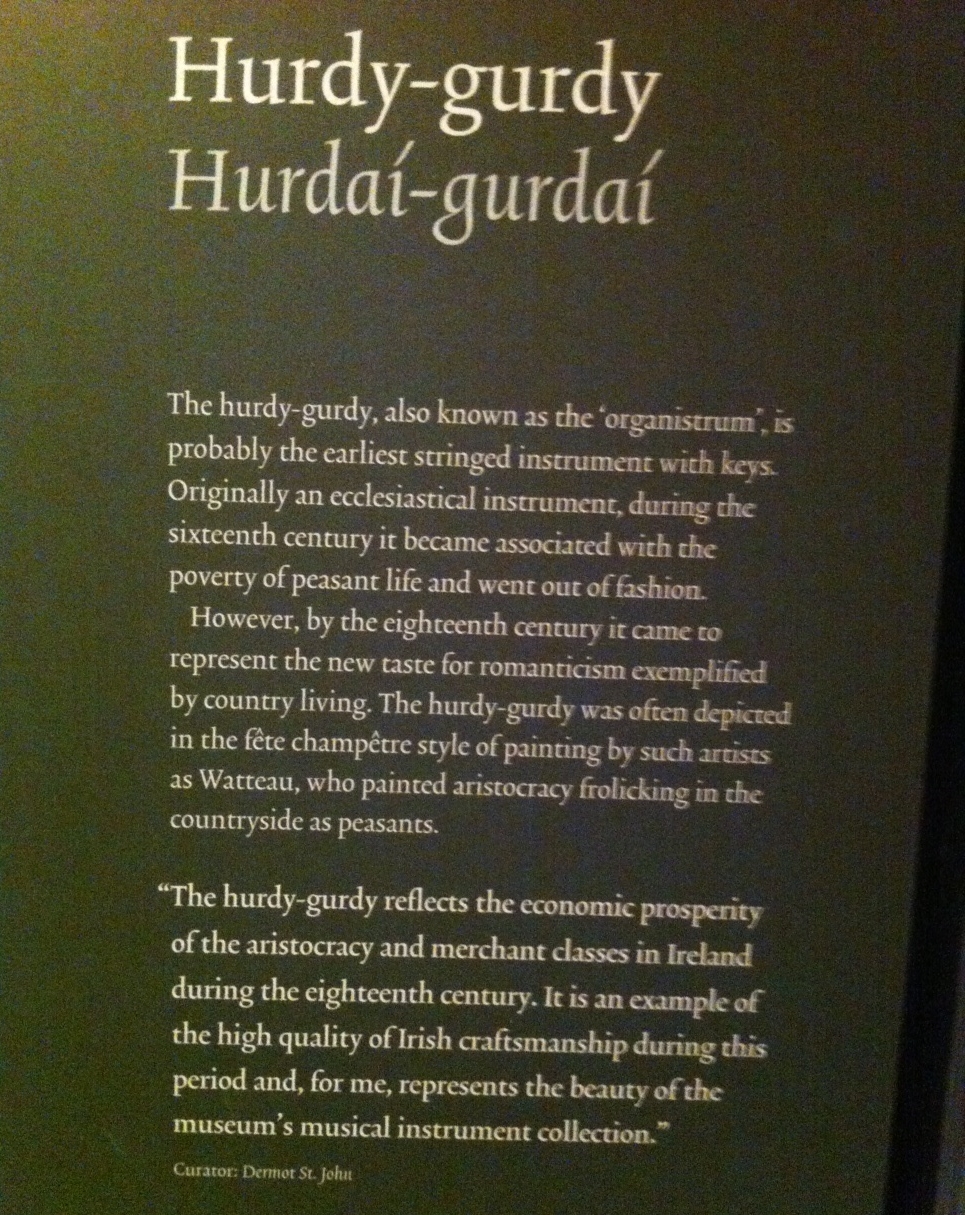Dublin: Iconic barracks makes for great museum
The National Museum of Ireland - Decorative Arts and History is located in the massive Collins Barracks built in 1702. Architect Tomas Burgh, who also built the world famous library at Trinity College, designed this early neo-classical building.
It makes for a perfect museum. The four floors wrapping around a huge central parade square (the number of paces associated with the marching soldiers still exist on the walls above the colonnade arches) are easily divided up into over 30-flexible gallery spaces that accommodate exhibitions of silver, ceramics, glassware, weaponry, furniture, folklife, clothing, jewelry, coins and medals. There is also a museum shop and quaint café with some very tempting pastries.
One of the many fascinating fashion exhibits.
This hurdy-gurdy instrument is just one of the many exhibits of historical decorative arts and crafts in the museum.
Eileen Gray
For us, the highlight of the museum's numerous exhibitions was the Eileen Gray retrospective. It encompassed everything we love about mid-century modern design – its furniture, architecture and art.
Born in Enniscorthy, Ireland in 1878, Gray moved to Paris in 1906 where she spent most of her working life. In Paris, inspired to explore new ideas by the likes of Picasso and Modigliani, she was one of the first artists and furniture designers to employ lacquer techniques as part of her work. She was interested in all aspects of design from furniture to architecture to interior design.
Gray loved to combine the opulence of Art Deco with the minimalism and clean lines of modernism as well as integrate the use of pure line and colour of the De Stijl artists.
Gray's iconic end table named E1027.
An example of Gray's use of lacquer in her furniture.
Model of contemporary architectural designed by Gray.
Pebbledash
I was also fascinated by the “Beyond Pebbledash” installation, a celebration of domestic architecture and design. The installation consisted of a single pebbledash house (a common small Dublin home with exterior walls made of pebbles mixed with stucco). In the mid 20th century, this façade covered up poor construction and kept costs down for affordable homes in both Europe and North America. Back story: The early 1950s home I grew up in had pebbledash walls. We just called it by it less glamorous term "stucco."
This life-size house sitting in the middle of the huge parade square has a real façade but only a steel skeleton frame of the walls, interior doors, chimney and roof. The curatorial notes say the installation is intended to provoke questions like:
- What have we built?
- Why have we built it here?
- What is the nature of house vs. home?
- What makes a great liveable city?
More information at: http://www.dublincity.ie/you-are-invited-launch-beyond-pebbledash
My personal fascination was mostly around how the pebbledash house was rendered almost insignificant in the massive parade square (the size of about two football fields) and the equally massive barracks building. To me, the “pebbledash home” installation spoke of the insignificance and temporary nature of most houses versus the timelessness of iconic structures. I also don’t get the link to the liveable city movement as the home is situated in what I would consider the most desolate and inhospitable urban environment one could imagine.
While in the past, a house became a home as most people lived in them all their lives. Often too multiple generations would live in the same house. Today, for most people a house is just a commodity to be bought and sold as part of their evolving lifestyle – they never really become a home.
The pebbledash house located at the far corner from the entrance to the museum is dwarfed in the stark parade square.
While wandering the museum, you get several different perspectives of the house.
A view of the back of the house and the cafe spilling out onto the plaza gives some life to the parade square.
Close up view of the house. I found the ropes around the installation very distracting.
Side-view of the pebbledash house.
Last Word
Of all the National Museums we visited in Dublin, the Decorative Arts and History Museum was our favourite. You could easily spend a few hours here.
The National Gallery unfortunately was under restoration and so the building and art did not meet expectations. The National Museum of Modern Art was also a bit of a disappointment as half of the gallery was closed for the installation of new exhibitions.
On the good side, all of the Ireland’s national museums are FREE!
If you like this blog, you might like:
Saks: Department Store or Art Gallery?
The dirt on the museum of clean
Flaneuring Bow Valley College/Art Gallery





